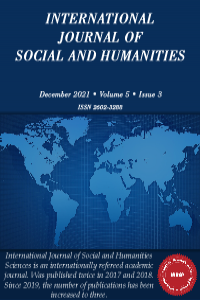Abstract
In the new phase of global re-alignment, the two largest South Asia countries, China and India are at large heads with each other because of changing geo-political arrangements and recent border clashes. The current border crisis is the worst situation and highest escalation between the two countries after the 1962 war. Although in past the border forces of the countries have clashed with each other but those clashes never resulted in killing of soldiers and change in status quo of the border. However, the recent clashes between the forces have resulted in everything that did not happened in past, not only left twenty Indian soldiers died, more than fifty were injured and imprisonment of ten Indian soldiers but it also changed the status quo of the de facto border namely the ‘Line of Actual Control’ by capturing 40 square miles by China of the territory claimed by India, development of infrastructure in shape of construction of roads and permanent bankers in the territory which was regarded as buffer zone as well as unprece-dented increase in the number of troops along weapons and artillery on both the sides. India and China border dispute involves about 13,500 square miles on In-dia’s Northern side along the Ladakh and 35,000 square miles on India’s Eas-tern side along the state of Arunachal Pradesh (Shukla, 2020). Since the 1962 war between India and China, both the countries managed their border disputes very well, therefore the question arises why it happened now? And what kind of challenge it is posing to the future of decades old Iran-India relations. Here an attempt has been made to analyse the regional and global events that has resulted in the border clashes and crisis in the China-India relationship.
Keywords
China’s Response and India’s capacity strengthening alliance with the US Implications on Iran–India Relations
References
- Bhushan, B. (2020, 26 June). China Crisis: What are India’s Options Be-yond Aligning with US? [The Quint]. Retrieved from https://www.thequint.com/voices/opinion/india-china-border-conflict-india-military-diplomatic-options-allies-united-states-strategy
- China-British Business Council. “One Belt One Road.”, London. Retrie-ved from: http://www.cbbc.org/cbbc/media/cbbc_media/One-Belt-One-Road-main-body.pdf
- Communist Party of India (Marxist), (2005, 25 May). “India’s surrender on Iranian Nuclear Issue. [Press statement. Retrieved from http://dev.cpim.org/content/indias-surrender-iran-nuclear-issue
- Delhi Riots Diplomatic Fallout: India Tackles Criticism from Iran, UK, Turkey (2020, 5 March). [The Wire]. Retrieved from: https://thewire.in/external-affairs/delhi-riots-iran-uk-turkey
- Kapila, S. (2016, 24 October) India’s Foreign Policy and the China-Pakistan Axis 2016 [Indian Defence Review]. Retrieved from: http://www.indiandefencereview.com/spotlights/indias-foreign-policy-and-the-china-pakistan-axis-2016/
- Financial Express (2019, 05 February). India’s defence Budget in a 10 trillion economy. Retrieved from: https://www.financialexpress.com/budget/indias-defence-budget-in-a-10-trillion-economy/1477189/
- Gady, F. S. (2019, 25 September). Ajai Shukla on the Current and Future State of India’s Military [The Diplomate]. Retrieved from: https://thediplomat.com/2019/09/ajai-shukla-on-the-current-and-future-state-of-indias-military/
- Gurmeet, K. B. (2017, 25 May). China’s Belt and Road Initiative: India Must Stay Out [Vivekananda International Foundation]. Retrieved from: http://www.vifindia.org/article/2017/may/25/china-s-belt-and-road-initiative-india-must-stay-out
- Kamat, D. (2019, 28 June). India’s new government will loosen ties with Iran. [The Asian Times] Retrieved from https://asiatimes.com/2019/06/indias-new-government-will-loosen-ties-with-iran/
- Laxman, K. B. (2019, 08 July). India’s Defence Budget 2019-20 [IDSA issue Briefs]. Retrieved from https://idsa.in/issuebrief/indias-defence-budget-2019-20-lkbehera-080719
- Laxman, K. B. (2018, 02 February). Defence Budget 2018-19: The Impe-rative of Controlling Manpower Cost. [IDSA issue Briefs]. Retrieved from:https://idsa.in/issuebrief/defence-budget-2018-19-controlling-manpower-cost-lkbehera-020218
- Ministry of External Affairs - Government of India (2017). Brief on In-dia-US Relations. Retrieved from https://www.mea.gov.in/Portal/ForeignRelation/India_US_brief.pdf
- Mitra, D. (2018, 08 May). India Ducks Stand on Trump and Iran, wants all sides to Engage Constructively. [The Wire]. Retrieved from https://thewire.in/diplomacy/india-calls-for-dialogue-to-resolve-iran-nuclear-deal-dispute
- Press Trust of India (2019, 05 March). At $177.6 bn, China's 2019 defen-ce budget is over 3 times that of India. Retrieved from https://www.business-standard.com/article/pti-stories/china-hikes-defence-budget-by-7-5-per-cent-to-usd-177-61-billion-119030500095_1.html
- Purushthaman, U. (2012). American shadow over India-Iran relations. [Strategic Analysis, Vol. 36, DOI: 10.1080/09700161.2012.728867
- Rajya Sabha (2017, 10 Agust). Question No. 2735 Belt and Road Initiati-ve of China. 10.08. 2017.Retrieved from: http://www.mea.gov.in/rajyasabha.htm?dtl/28857/question+no2735+belt+and+road+initiative+of+china
- Saran, S. (2018, 18 December). How China views Indo-Pacific [The Tri-bune]. Retrieved from: https://www.tribuneindia.com/news/comment/how-china-views-indo-pacific-13470
- Shiucn, W. & Colombage, J. (2019, 23 October). Report: Indo- Pacific Strategy and China’s Response. [Institute for China-America Studies]. Retrieved from: https://chinaus-icas.org/report/indo-pacific-strategy-and-chinas-response/
- Shukla, A. (2020, 19 June). How China and India Came to Lethal Blows [The New York Times]. Retrieved from: https://www.nytimes.com/2020/06/19/opinion/China-India-conflict.html?login=email&auth=login-email&login=email&auth=login-email
- The Hindu (2009). Retrieved from: http://www.thehindu.com/news/national/indiavotesagainstiraniniaearesolution/article55953.ece
- Zarif, J. (https://twitter.com/JZarif/status/1234519783435067392,2020)
Details
| Primary Language | English |
|---|---|
| Journal Section | Research Article |
| Authors | |
| Publication Date | December 31, 2021 |
| Published in Issue | Year 2021 Volume: 5 Issue: 3 |


